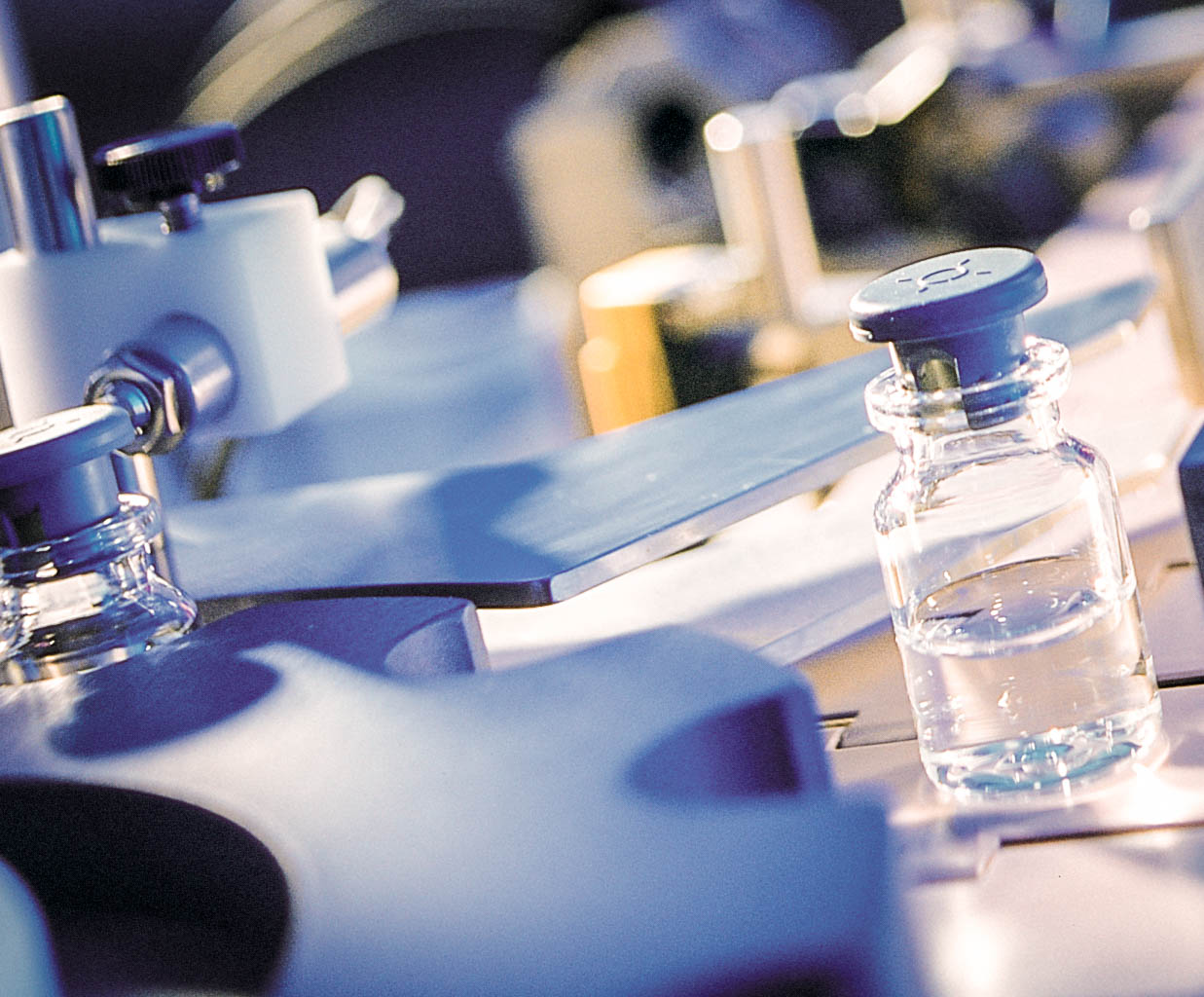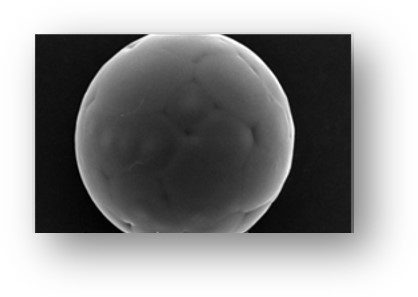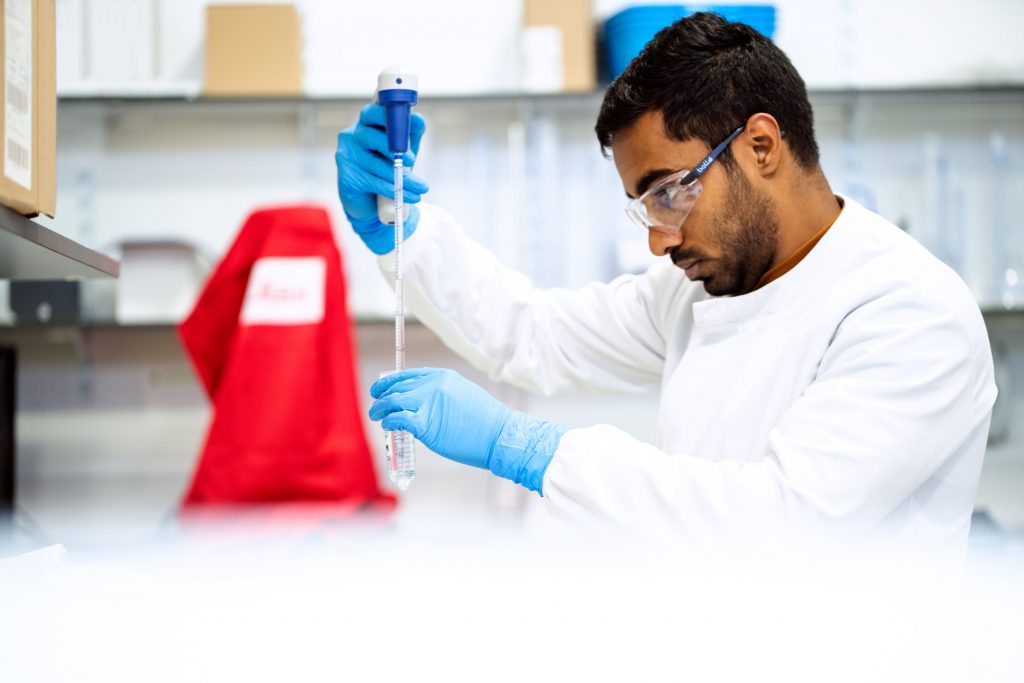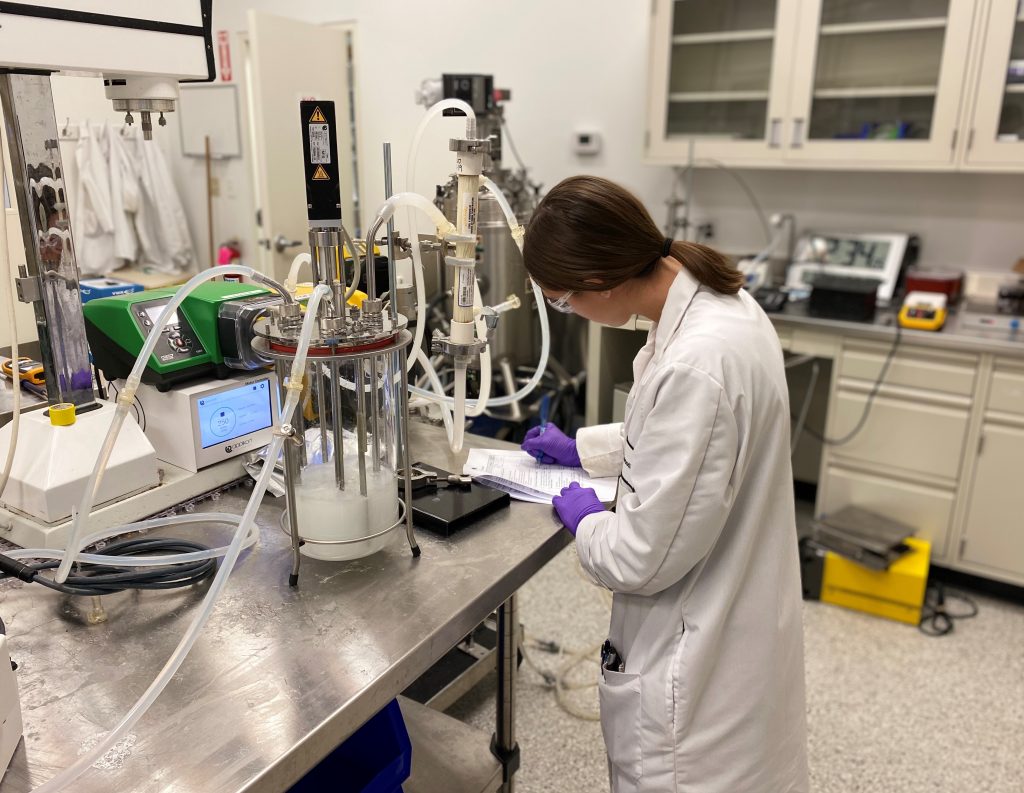Author Archives: Mark Ilhan
Quick Facts About Biologics in the Pharmaceutical Industry
- Biological medicines are carefully regulated by agencies like the FDA and EMA, requiring rigorous clinical and preclinical trials, ongoing safety monitoring, and strict manufacturing standards, including production in GMP facilities and detailed labeling for patient safety.
- Incorporation of biologics with sustained-release technology, such as microspheres, implants, hydrogels, and fusion proteins enables controlled, prolonged drug delivery, enhancing therapeutic effects and reducing dosing frequency for patients.
- Compared to traditional small-molecule drugs, biologics are larger, more complex molecules with targeted mechanisms of action and personalized treatment potential, but generally shorter stability and shelf-life due to their sensitivity to environmental factors.
Biologics are drugs produced using a living system, like microorganisms, plant cells, or animal cells. The particles used in biologics are made through complex processes and are at the center of a variety of products like vaccines, monoclonal antibodies, recombinant proteins, gene therapies, and beyond.
Biologics are reinventing the way we view the pharmaceutical landscape because they are innovative solutions that provide therapeutic benefits to patients with a wide range of diseases and conditions. Learn more about this fascinating technology and discover how it is being used to help provide relief to a variety of patients in our post.
The Origin of Biologics in Pharmaceuticals
The first use of biologics in medicine traces back to the late 19th and early 20th centuries. Emil von Behring was the first to make the discovery while working on a serum therapy for diphtheria. However, it was Paul Ehrlich’s work on the “magic bullet” that started the movement for the use of biologics in targeted drug delivery. Together, the work of von Behring and Ehrlich led to the development of vaccines that worked against infectious diseases, marking the earliest successes of biologics in medicine.
It is safe to say that a lot has evolved since the discovery of biologics in medicine, and regulation has played a key role. The use of biologics in medicine started to be regulated by the Food and Drug Administration (FDA) and European Medicines Agency (EMA) in the early 2000s. These organizations set specific guidelines in place to ensure any produced drugs are safe and transparency is maintained for patients.
Regulating Biological Medicine
The FDA and EMA oversee the approval for regulation of biological products. The approval process is rigorous to help ensure the safety, efficacy, and quality of each product released to the public. For this to happen, each biological medicine goes through both clinical and preclinical testing. The clinical trials include three phases of testing.
Once a biological drug is approved for use on the market, agencies continue to monitor the safety of it through surveillance programs. Adverse and other side effects are reported and evaluated. Products will be taken off the market if serious safety concerns arise. Additionally, there are thorough investigations conducted specifically for the use of biologics in the pediatric and geriatric populations.
Lastly, there are strict quality control measures in place to ensure consistency throughout the manufacturing process. Biologicals must be manufactured in a GMP facility. Additionally, there must be a label on the drug that describes product information like dosing, administration, potential side effects, and contraindications. Together, these factors work together to keep patients safe while encouraging the evolution of treatment for appropriate populations.
Using Biologicals in Pharmaceuticals to Provide Therapeutic Benefits to Patients
Following their discoveries, von Behring and Ehrlich truly started a movement when they began using biologicals in pharmaceuticals. Since these two found success back in the early 19th and 20th centuries, a variety of other discoveries have been made.
Here are some other astonishing biologic discoveries that have shifted the way that patients are treated:
- Recombinant DNA technology used the genetic engineering of bacteria to produce human proteins like the insulin growth hormone and revolutionized diabetes treatment
- Monoclonal antibodies were discovered, opening up new opportunities to prevent organ transplant rejection
- Growth hormones were developed to help children who had growth disorders
- Cytokines were understood on a deeper level which resulted in therapeutic treatment for immune disorders like asthma, rheumatoid arthritis, Lupus, Cohn’s Disease, and more
- Gene therapies like Kynriah can be used to treat certain types of cancer
- mRNA can be used in vaccine technology, such as with the COVID-19 vaccine
Combining Biological Medicine with Sustained Release Technology
Since Oakwood Labs uses sustained-release technology, it would be amiss to not look at biologics for this form of therapy. Biologics can be modified to achieve specific release patterns that enable controlled and sustained drug delivery in patients. This leads to reduced dosing and better therapeutic benefits for patients who need it.
Here are the main methods that incorporate the use of biologicals with sustained-release technology:
- Microspheres/nanoparticles – Biologics can be encapsulated within microspheres and nanoparticles that are made out of biocompatible materials. Then, these particles can be engineered to release the biologic over an extended period of time. The encapsulation is helpful for protecting the biologic from degradation and can be used to enhance stability.
- Implants – Biologic medicine can be encapsulated within implantable devices like biodegradable scaffolds. As the scaffold breaks down, it will slowly release the biologic which is useful for localized and long-lasting treatments.
- Hydrogels – Hydrogels are water-absorbing polymers that hold water and biologics. Gels can be designed to have sustained release qualities to maintain a consistent concentration of the therapeutic agent for extended periods of time.
- Fusion proteins – Engineering fusion proteins is done by combining a biologic with a carrier protein. The carrier protein helps extend the half-life of the biologic which creates a sustained release effect.
Benefits of Incorporating Biologics into Medicine
Using biologics in medicine has proven its success in countless ways across the industry. Biologics can benefit each patient in different ways, and this depends on what they are being treated for.
Here are just a few of the properties that biologics possess and why they are trusted to form new treatments:
- Targetable – Biologics can be targeted to reach specific molecules, cells, or even pathways, which encourages precise treatment while simultaneously reducing the risk of attacking healthy cells or tissues.
- Diverse – Effective therapeutic outcomes can be achieved for a wider audience since biologics can be personalized with a patient’s unique genetic makeup in mind.
- Innovative – Thanks to advancements in technology, biologics are used to treat diseases that were previously difficult to target with small-molecule drugs. Examples include autoimmune disorders, certain types of cancer, and rare genetic diseases.
Biologics in Pharmaceuticals vs. Small Molecule Drugs
From their composition to their manufacturing processes, there are a variety of ways that biologic medications differ from traditional small-molecule drugs.
- Composition – Biologics are large, complex molecules that are derived from living organisms. They are produced using biotechnical processes. Small-molecule drugs are chemically synthesized with a smaller-sized molecule. They have a defined number of atoms.
- Action course – Biologicals have highly specific mechanisms of action that allow them to target specific cells, proteins, and receptors. This makes them especially useful in precision medicine and targeted therapy treatments. However, small-molecule drugs have a tendency to interact with a wide range of molecules due to their small size and structure.
- Stability – Since biologics are sensitive to environmental factors like temperature and pH, their stability and shelf life are often shorter than those of small-molecule drugs.
Contact Us Today for More Information
Biologicals are at the forefront of biomedical research. With time, we can expect them to offer effective treatments for a variety of medical illnesses and conditions that have formerly been difficult to treat.
If you have any questions about biological medicines or the future of their impact in the world of pharmaceuticals, be sure to reach out to our team.
Oakwood Labs is proud to announce that we will be at the 2023 Controlled Release Society 2023 annual meeting and expo, July 24-28, 2023. The theme this year is “The Future of Delivery Science,” which focuses on the next generation of scientists and progressive research that is being conducted around the world.
Find Us at Booth 304
As a global leader in sustained-release drug delivery, Oakwood Labs is able to solve changes related to developing and manufacturing pharmaceutical injectables. We pride ourselves on being transparent with our clients throughout the whole process and offering our expertise. If you’re looking for state-of-the-art technology, personnel, and equipment, you’ll want to check out Oakwood Labs at booth #304.
We can help you with the following:
- Clinical trial manufacturing (Phase I, II, III)
- Feasibility studies
- Pre-formulation development activities
- Commercial aseptic GMB manufacturing
- Scale-up of formulation
- Manufacturing toxicology batches
- ICH compliant stability testing
Contact Us for More Information
The CRS 2023 conference covers a wide range of topics, and we are happy to contribute to the event! If you aren’t able to attend, but still want to learn more about Oakwood Labs or what you missed at the conference, contact us today!
We look forward to discussing our technology and more.
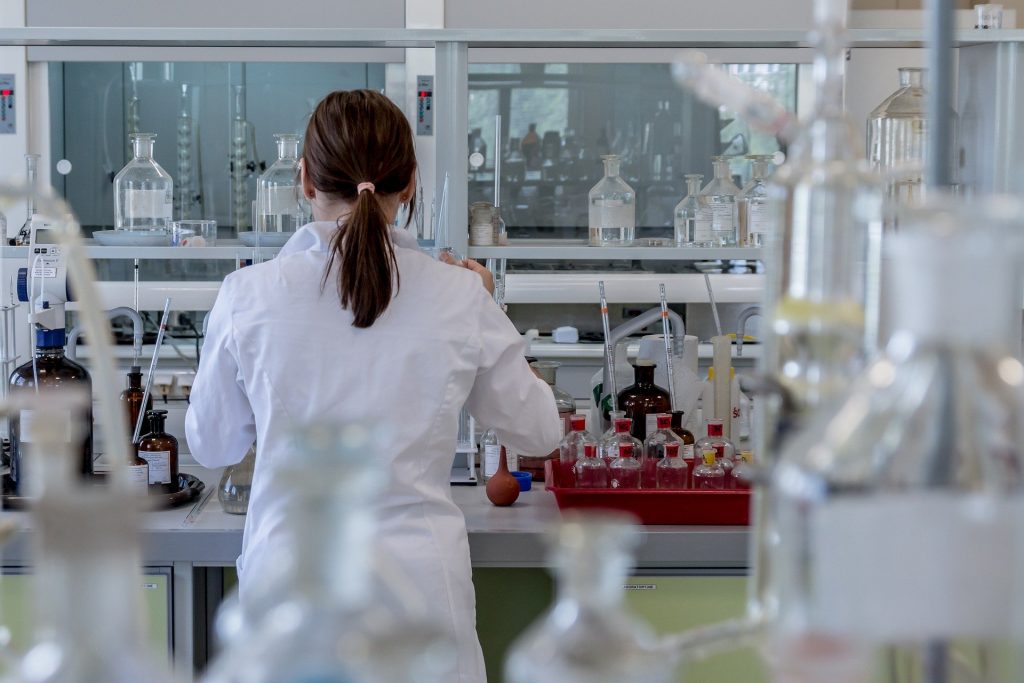
Summarizing the Role of Amino Acids in Pharmaceuticals
- Amino acids contribute to drug formulation by supporting matrix formation, enhancing solubility and stability, modulating drug release, and promoting biocompatibility.
- Different amino acids or combinations can be tailored to match the drug’s characteristics, desired release kinetics, and patient needs, which allows for customizable and effective pharmaceutical solutions.
- In addition to reduced dosing, these formulations provide prolonged action, targeted delivery, fewer side effects, and improved control over drug absorption, which enhances both treatment outcomes and patient experiences.
Amino acids have proven their capabilities in the pharmaceutical industry in a variety of ways. They can be used alone as nutritional supplements, synthesized to help form other products, or even built into drug delivery systems.
Since Oakwood Labs focuses on drug formulation, we wanted to explain the role of amino acids in pharmaceuticals, specifically addressing how they impact sustained-release injectables and provide therapeutic benefits to patients.
How Amino Acids Benefit Your Pharmaceutical Projects
Amino acids are used in the development and function of sustained-release injectables and pharmaceuticals because they help with matrix formulation, suspension, drug diffusion, and biocompatibility.
Different amino acids and combinations can be deployed to achieve specific therapeutic goals. With this in mind, the amino acids used will depend on factors like the drug that is being delivered, the intended release kinetics, and the compatibility of the overall formation.
Using amino acids in pharmaceuticals like sustained-release injectables assist with the following:
- Matrix formulation – The use of amino acids in sustained-release injectables can help form a matrix that is modified to perform long-acting therapy for the patient. The matrix encapsulates the active drug and helps control the rate at which it is released, making it ideal for less frequent doses and better patient compliance.
- Solubility – Solubility is needed in drug formulations because it leads to effective absorption. By enhancing the solubility of certain drugs, amino acids better maintain the composition of the drug and promote absorption into the body.
- Stability – Along with solubility, amino acids also protect the drug from degradation throughout the process of storage and release. Stabilization additionally helps increase drug effectiveness, especially when dealing with sustained-release applications.
- Modulation – Using amino acids in a sustained-release application can adjust the overall drug output to meet the demands of the patient. This means amino acids are capable of altering the diffusion characteristics of the drug being used within the formulation to better meet a patient’s therapeutic objectives.
- Biocompatibility – Amino acids used in pharmaceutical applications like sustained-release injectables can promote biocompatibility for medical applications. Biocompatibility means that the injectable will not interfere with any of the other cellular functions or compromise the patient’s wellness, and it is important because it increases safety, long-term tolerability, and regulatory compliance.
Benefits of Using Sustained-Release Pharmaceuticals
Sustained-release injectables and pharmaceuticals have gained popularity in recent years due to their variety of benefits. Since the drug remains active in the bloodstream over a period of time, sustained-release dosages offer prolonged therapeutic effects. This helps improve patient compliance and reduce the frequency of dosing.
Other advantages of sustained-release dosages include:
- Prolonged action of the medicaments
- Control over drug therapy
- Ability to modify the extent and rate of drug absorption
- Delivering API directly to the desired location
- Decreasing total amount of a drug, reducing local side effects
- Ability to modify the extent and rate of drug absorption
Work with Oakwood Labs on Your Next Project
If you are looking to incorporate amino acids into your pharmaceuticals, be sure to request help from the team at Oakwood Labs. We are a leading manufacturer of sustained-release pharmaceuticals and will work with you throughout the creation process. This includes proof of concept, feasibility studies, clinical trials, and finally the production of an FDA-approved commercial supply.
Additionally, our team has over 20 years of experience, which makes us a trusted and effective partner for global pharmaceutical firms of all sizes. See how we can incorporate amino acids into your sustained-release pharmaceuticals and beyond today.
Learn More About Using Amino Acids in Pharmaceuticals
The team at Oakwood Labs is ready to help you achieve high-quality results in your next project. Our quality assurance and validation practices will deliver the best solutions, regardless of the formulation needed.
For more information on using amino acids in sustained-release pharmaceuticals, be sure to contact us today.
In the pharmaceutical field, molecules are often a major topic since they play a key part in research and development initiatives. Small and large molecules each have their place in the field, but small molecules are particularly significant in drug development since their size allows for easy passage through the gastrointestinal tract.
4 Key Points About Small Molecule Pharmaceuticals
- Small molecule injectables are quickly absorbed into the bloodstream, enabling fast action in emergency situations and allowing for targeted delivery to specific cells, which boosts efficacy and minimizes systemic side effects.
- These medicines display high bioavailability, require lower dosages, lead to fewer side effects, and provide cost savings.
- Small molecule drugs can be delivered via IV, intramuscular, or subcutaneous injections, and some are suited for self-administration, making them accessible for patients who cannot use oral medications.
- Oakwood Labs is a skilled partner in small molecule drug development with over 20 years of experience and operates out of an FDA-approved cGMP facility.
Benefits of Small Molecule Injectables
What is a small molecule drug? Small molecule pharmaceuticals are low molecular weight compounds that can be administered in a variety of ways, including via intravenous (IV), intramuscular (IM), or subcutaneous (SC) injections. In addition to offering various ways to inject medicine, small molecule injectables also provide benefits such as:
- Rapid onset of action – Small molecules are able to be absorbed quickly into the bloodstream, allowing them to provide needed assistance in emergency situations.
- Targeted delivery – These injectables can be formulated to target certain cells, increasing efficacy and reducing the potential for systemic side effects.
- High bioavailability – Small molecule injectables often can display high bioavailability, meaning a portion of the injected dose reaches the target organs or tissues. This ultimately reduces the need for higher doses, leads to lower costs, and can produce fewer side effects.
- Flexible dosing – By using injectables, more control over the dosage is possible. This allows for treatments to be adjusted based on patient needs.
- Stability and shelf life – Small molecule pharmaceuticals usually have a longer shelf life compared to other complex drug formulations. This is important when it comes to the storage and distribution of drugs.
- Potential for self-administration – These injectables can provide greater independence for patients, as some can be designed for self-administration.
- Improved patience compliance – In the event that a patient has trouble taking oral medication, these small molecule injectables provide a great alternative.
How Small Molecule Pharmaceuticals Play a Key Role in Medicine
With their ability to target specific areas in the body and provide therapeutic benefits, small molecule injectables have become a vital part of drug development and can be used for a variety of roles, such as in:
- Pharmacokinetic studies
- Post-marketing surveillance
- Clinical trials
- Regulatory approval
- Preclinical studies
- Formulation development
- High-throughput screenings
- Structure-activity relationship (SAR) studies
- Lead compound identification
- Target identification or validation
Small molecules have helped transform a wide range of medical conditions, making them an essential tool in the drug development process.
Where Oakwood Labs Steps In
Oakwood Labs has been an effective partner for a variety of pharmaceutical firms of diverse sizes. We pride ourselves on providing transparent communication, achieving milestones within set deadlines, and offering our expertise throughout the entire small molecule manufacturing process.
We have over 20 years of experience in developing sustained-release injectable pharmaceutical products, including small molecule injectables. Our team can help you if you are in the early development stages or are looking to scale up an existing formulation.
With state-of-the-art technology and dedicated personnel, we can help you solve all of your challenges, and our facilities are adept at handling small molecule injection manufacturing and more.
Our cGMP manufacturing facility is FDA-approved and was created to enhance our partnering and development capabilities, including for small molecule pharmaceuticals. Features of our facility include:
- Aseptic filling
- In-house QC microbiology and QC chemistry
- Inspecting, labeling, and packaging
- Aseptic formulation
- Compact and portable equipment train
- Non-aseptic formulation
- Raw material dispensing and weighing
- Vial capping
- Shipping, receiving and warehouse space
- Aseptic pharmaceutical lyophilization
By working with us, you can expect benefits such as short lead times, robust quality systems, and CMC development capabilities for a wide selection of products.
Contact Oakwood Labs About Small Molecule Injection Manufacturing
If you’re interested in learning more about small molecule injection manufacturing, contact our team today. We are committed to developing products that provide therapeutic benefits to patients and excellent returns to our partners.
Microspheres vs. Microcapsules: Key Takeaways
- Microspheres and microcapsules are both microparticles used in sustained-release injectable pharmaceuticals, but they have distinct structures. Microspheres are hollow with a solid outer casing, while microcapsules have a solid or liquid core enclosed in a shell-like coating.
- Microspheres, ranging from 1 μm to 1 mm in size, are made of polymers and can be delivered through various routes, including oral, parenteral, nasal, ophthalmic, and transdermal methods.
- Oakwood Labs has a patented microsphere technology, Chroniject™, which offers several advantages, including rapid formulation development using small-scale batches, easy scalability, compatibility with various molecules, and flexible release durations from one week to one year.
As you know, Oakwood Labs is a global leader in sustained release injectable pharmaceuticals. One of the key components of these drugs are microparticles, which are delivery systems for water-insoluble and sparingly water-soluble agents. Microparticles are split into microspheres and microcapsules.
Both of these play an important role in the pharmaceutical development process at Oakwood Labs. Learn more about microspheres vs. microcapsules.
What Are Microspheres?
Microspheres are small spherical particles that have a solid outer casing, are hollow, and do not contain fluid inside. These particles are made out of polymers and are used in drug delivery applications due to the high surface area, but low particle size. Their size ranges from 1 μm to 1 mm, making them effective for traveling within different areas throughout the body, which helps increase absorption rate and bioavailability.
Microspheres can be delivered through oral, parenteral, nasal, ophthalmic, and transdermal methods. They attach to proteins, peptides, antibodies, antigens and other small molecules to travel through the body and release at controlled rates.
Using microspheres in drug delivery has many benefits including release rates are tailored to specific applications (constant rate of delivery or rapid release), an increase in patient comfort and compliance by reducing the dosing frequency, and more.
What Are Microcapsules?
A microcapsule is also a small spherical particle, but its size is a little different, being 50 nm to 2 mm. The structure of a microcapsule is that of a membrane-enclosed core with a shell-like coating. Sometimes there are multiple cores within the coating. The core is composed of a drug constituent, stabilizers, or additives. The outside coating consists of an inert polymer, coloring agent, plasticizers, resins, waxes and lipids.
Microcapsules allow the core to be isolated from the outside environment and then released when desired. These microcapsules are used for sustained drug release, converting liquid drugs in a free-flowing powder, reducing toxicity and GI irritation, and for drugs that are sensitive to oxygen, moisture or light.
The Key Differences Between Microspheres and Microcapsules
The major difference between microspheres vs. microcapsules is the structure of the particle. As mentioned previously, microspheres have a solid casing and are hollow, while a microcapsule has a solid or liquid core in a shell-like coating.
The main reason for microencapsulation in pharmaceuticals is to protect drugs from environmental hazards like humidity, light, oxygen or heat. They also help controlled release within the patient and avoid too rapid of a release.
Microspheres are manufactured out of different types of polymers that when injected react within the patient to release a certain amount of the drug. While microspheres and microcapsules achieve similar goals for controlled drug release, their structures are what sets them apart.
Our Process for Manufacturing Microsphere Technology
At Oakwood Labs, our microsphere manufacturing capabilities have solved complex pharmaceutical industry challenges for more than 20 years. Our microsphere technology Chroniject™ is a patented, polymer-based injectable microsphere system for drug delivery. This technology is unmatched, and some of its major benefits include:
- Use of small-scale batches allow for rapidly developed formulations
- Formulations are easily scalable
- Process parameters are well-controlled
- Compatibility with peptides, small molecules, and proteins
- Excellent stability
- Flexible release durations ranging from one week to one year
Reach Out Today for More Information on Microcapsules and Microspheres
Our team is fully equipped and operates a staffed research and development facility specifically created to manufacture sustained release injectables. Oakwood Labs is committed to developing products to provide therapeutic benefits to patients.
If you are interested in learning more about microspheres vs. microcapsules for drug delivery, contact us at Oakwood Labs today.
Key Takeaways of Repurposing Drugs
- Time and cost savings – Traditional drug development can take 12–15 years and cost $1–3 billion. Repurposing drugs can significantly cut down both the time and cost by skipping or abbreviating early clinical trial phases.
- Higher probability of success – Since repurposed drugs have existing human data, adverse effects and toxicity profiles are often better understood. This tends to lead to higher approval rates compared to brand-new compounds.
- Broad applications – Repurposing is particularly useful for rare diseases or diseases with few treatment options. In the oncology space, non-cancer drugs are being tested for viability as cancer therapies because many diseases share common molecular pathways.
- Institutional capacity matters – Organizations like Oakwood Labs, with expertise in development, manufacturing, and regulatory compliance, are well-positioned to support the drug repurposing market through formulation development, scale-up, and manufacturing.
A Brief Introduction to Repurposing Drugs
The medical field is always searching for new opportunities to help treat patients, and one technique that provides various advantages is drug repurposing, also known as drug positioning or drug repositioning. This innovative technique involves exploring new medical uses for existing drugs.
At Oakwood Labs, we are a leader in the pharmaceutical industry and drug repurposing market, solving difficult challenges that arise from developing pharmaceutical injectables. Similar to the goals of drug repurposing, we strive to develop products that provide therapeutic benefits to patients and practical benefits to medical operations.
Using Repurposed Drugs for Cancer
Focusing specifically on oncology and the effort to find new treatments, repurposed drugs for cancer have become an attractive option, with some non-cancer drugs being examined for their possible efficacy. Many unrelated diseases share common molecular traits, making repurposing possible. It also opens the door for different diseases to respond to the same drug.
Traditionally, bringing a new drug on the market would take 12 to 15 years and would require a large budget of 1 to 3 billion dollars. By choosing the approach of drug repositioning, you’ll reap benefits such as:
- Cutting costs surrounding research and development
- Reducing the timeline of development, because if the drug has already been safely administered to humans, you could skip Phase 1 of clinical trials
- Higher approval rates
- Comprehensive information is available on pharmacology dose, possible toxicity, and more
The Role of Drug Repositioning in the Greater Pharmaceutical Industry
Pharmaceutical companies continue to evolve, shaping the future of drug development by finding innovative solutions, such as drug positioning. With many rare diseases in the world having few approved treatment options, repositioning of drugs has become an effective strategy.
Using the repurposed drug strategy for such cases, facilities can minimize the knowledge gap that occurs when running a clinical trial. By understanding more about the drug, such as how it reacts in the body, organizations can also help speed up the process.
Since drugs are chemicals that change the biochemical pathways in our cells, it’s common for them to have an effect on more than one pathway. In drug repositioning, we can take advantage of those different effects to provide solutions to diverse medical conditions.
Oakwood Labs, a Leading Manufacturer in the Drug Repurposing Market
With over twenty years of industry expertise, we have proven ourselves to be an effective partner to global pharmaceutical firms of various sizes. Whether you are in the early development stage or are looking to scale up an existing formulation, we are ready to help.
Oakwood Labs strives to achieve milestones within set deadlines, provide transparent communication, adapt to change, and offer our expertise throughout the entire development process. We have everything you need, from support to our FDA-approved cGMP manufacturing facility, all to help enhance our development capabilities and aptitude for repurposing drugs.
Our facility offers a variety of contract manufacturing services, including:
- Commercial products for use in humans or for veterinary use
- Phase I, Phase II, or Phase III clinical trial material
- Sterile liquids, sterile lyophilized parenteral, suspensions, microspheres, and others
- Small-volume injectables
- Class III and IV DEA controlled substances
- Vials with lyophilized or plug stoppers, with both 13 mm and 20 mm openings
Contact Our Team
At Oakwood Labs, we are ready to use our technology and expertise to tailor solutions to your project’s needs. If you’re interested in drug repurposing and would like to discuss options with us, contact our team today.
We are ready to support all phases of long-acting injectable development and help you with your next project.
Key Takeaways About the Disadvantages of Extended-Release Tablets
- Sustained-release injectables maintain more stable plasma levels over time, reducing peaks and lows, and lowering side-effect risks compared to sustained-release capsules
- Injectable formats avoid dose dumping, which can be a serious risk when using many sustained-release medications
- Injectables improve patient adherence by eliminating the need for daily dosing and minimizing missed doses, which can be a challenge with sustained-released drugs that are taken orally
- Injectable delivery under controlled administration reduces overdose risk and misuse potential, which can be among the disadvantages of extended-release tablets
About Sustained-Release Medication
Sustained-release injectables provide a solution for those that require long-term treatment, or in cases where patients can’t swallow sustained-release tablets or capsules. Also, depending on the drug, certain tablets cannot be crushed, making injectables the preferred option as well.
Oakwood Labs focuses on long-acting injectable development since these medication delivery methods can reduce the number of injections needed, target specific anatomical areas, and help improve patient compliance. By choosing injectables over sustained-release capsules, you’ll achieve the quality and efficacy you’re seeking.
What Are Sustained-Release Tablets?
Disadvantages of Choosing a Tablet Over an Injectable
While they do offer some benefits, there are distinct disadvantages of extended-release tablets compared to injectables. Tablets have a higher risk of dosage issues, often known as dose dumping. This is when large amounts of a drug are quickly released, and a toxic quantity is introduced into systemic circulation. These capsules are also often quite large in size, which may cause issues in ingestion or transit through the digestive system.
Why Sustained-Release Injectables Are Beneficial
Sustained-release injectables are often the preferred method among clinical professionals due to the convenience and effectiveness they offer. While there are various types of injectables, depending on the medication they are utilized for the effects can last anywhere from two to twelve weeks with one dose. This provides a practical option for those having trouble taking medication on a daily basis.
By choosing injectables in place of sustained-release capsules, you will help improve the lives and routines of patients in the following ways:
- Safety – When administered by medical personnel, sustained-release injectables can help guarantee safety for your patients. Through regulated injections, you reduce the risk of accidental or deliberate overdose.
- Regularity – Patients who receive injectables need to show up for more appointments, creating regular interactions between them and their medical team. This results in a solid routine and an increase in social interactions.
- Stability – Sustained-release injectables help by treating patients with more stable plasma concentrations compared to sustained-release tablets or oral medications. It also lessens the frequency of having peak plasma levels, which can result in lesser side effects for the patient. Also, for those prone to hospital visits, relapse frequency and rehospitalization rates are decreased.
- Reduced accountability – In order to see the best results with medications, it’s important for patients to take them every day. With long-acting injectables, patients no longer need to keep track of daily dosing needs.
Choose Oakwood Labs as Your Source for Sustained-Release Pharmaceuticals
At Oakwood Labs, we understand how essential a partnership is when developing a sustained-release drug from concept to commercialization. With our state-of-the-art technology and personnel, we’ve been able to solve common challenges involved with developing sustained-release injectables such as formulation development, GMB manufacturing under rigorous quality systems, scaling up, and process controls.
As a specialty pharmaceutical company, we are here to help in development as well as scaling up an existing formulation. We support all phases of long-acting injectable (LAI) development, working with you through proof of concept to clinical trial material, all the way up to FDA-approved commercial supply.
By choosing Oakwood Labs as your effective partner, you’ll gain services and benefits such as:
- A strong focus on project management and communication
- Tailored release profile from weeks to one year
- Contract manufacturing services
- ChronijectTM, our patented injectable microsphere technology
- A track record of success for taking projects through every process stage
- Efficient and stringent process controls
- R&D formulation development
- Demonstrated lot-to-lot reproducibility with proven scale-up success
Contact Us to Learn More About Sustained-Release Injectables
Our special pharmaceutical company is ready to help ensure you meet your requirements and expectations for sustained-release injectables. If you’re wanting to learn more about how Oakwood Labs can provide solutions to your company, reach out to our team today.
Additional Resources on Sustained-Release Injectable Development
Medications are classified and categorized in many ways including when it comes to distribution methods, dosage, intent, and more. For the purposes of this post, we are going to focus on the rate at which medications are released in the body to serve their intended function.
The time it takes for a drug to run its course will impact all of the characteristics mentioned above, so we’ll look at extended-release medication and modified-release medication and how it applies to drug delivery.
What Is the Difference Between Immediate-Release Drugs and Extended-Release Drugs?
Immediate-Release Drugs
For the purposes of comparison and to fully understand the role of extended-release medications, we’ll start by acknowledging the most common oral dosage for medication, which is immediate release. Any medications classified as immediate release, or IR, go to work very quickly and for a short period of time.
Modified-Release Drugs
As part of an effort to administer medications more conveniently and provide worthwhile options for patients, modified-release medications began appearing on the market. These medications were developed to extend and/or delay their effects to better aid the patient. Their design often means that a patient is required to take medication less frequently, which in many cases is majorly beneficial to their lifestyle.
Modified-release drugs, also known as extended-release drugs or slow-release drugs, are designed to last longer in your body. For example, someone administered an extended-release medication may only need to take one to two doses as opposed to three to four doses of an IR medication. From a physiological standpoint, these medications are absorbed much slower by the patient and do not start breaking down until they reach a certain area of the body.
What Purposes Do Slow-Release Drugs Serve and How Can Oakwood Labs Help?
As mentioned above, modified-release drugs require less frequent doses while still delivering the same medicinal benefits as their counterpart IR medications. This can be quite beneficial when it comes to an individual who has trouble taking medication on a set schedule or more than once a day.
One type of extend-release medication that is frequently used is long-acting injectables. Oakwood Labs is a leader in the development and manufacturing of these extended-release injectables, and some benefits of this type of drug administration include:
- Fewer injections needed over a determined period of time
- Ability to target precise areas of the body
- Improved patient compliance
- Help in preventing drug abuse
Our team has over 20 years of drug encapsulation experience and can work closely with you in developing long-acting injectables for your needs. Visit our homepage to learn about everything we can provide.
Contact Oakwood Labs for Extended-Release Medications
Oakwood Labs has been working in pharmaceutical development for over two decades and has a team of dedicated scientists ready to help your business from concept to finished product.
If you are interested in working with us or would like to learn more about slow-release medications, contact our team today!
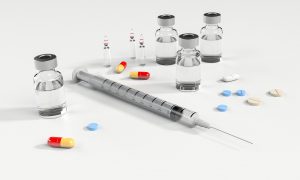
It is important to note that “extended-release pharmaceuticals” is an umbrella term for both sustained- and controlled-release pharmaceuticals. These drugs are part of a series called modified-release dosage forms, which refers to the medication’s time-release technology.
Typically, the drugs you ingest are immediate release, which means they are instantly activated when they are ingested. However, extended-release, sustained-release, and controlled-release drugs are modified pharmaceuticals designed to release at a delayed or slower rate to change how and when the drug hits your system.
A Breakdown on Extended-Release Pharmaceuticals
Extended-release drugs were created to offset the side effects that come with traditional, immediate-release drugs. IR drugs are designed to release a spike of medication into the bloodstream that then tapers off. Because of this, extended-release pharmaceuticals offset that spike of medication to provide a steadier amount of medication into the body.
Controlled-Release Medication
- These are medications that are labeled with “CR” at the end of their medical names
- CR drugs can release active ingredients at a very specific rate to ensure there is a constant medication flow in the body for a specific period of time
- Due to their medication-regulating abilities, fewer doses are required throughout the day
Sustained-Release Medication
- These are medications that are labeled with “SR” at the end of their medical names
- SR tablets or capsules prolong the medication’s release to dole out the benefits of the medication over a longer time period
- Although the medication is released over a longer period, the medication levels do not remain constant while in the body
Extended-Release Injectables from Oakwood Labs
Here at Oakwood Labs, we are your source for extended-release injectables. With over 20 years of drug encapsulation experience, we have patented technology to control particle size, customize release durations, and minimize residual solvents.
Our team of professionals has the ability to perform research and develop specially formulated extended-release injectable medications for our customers’ specific needs. Some benefits of our extended-release injectables include:
- Reducing the number of injections needed
- Ability to target specific anatomical areas
- Improved patient compliance
- Helping to prevent drug abuse
Extended-release drugs make it simpler for individuals to take medications on a regular basis, as these drugs are easier for the body to tolerate in comparison to immediate-release pharmaceuticals. Due to their modified composition, fewer doses are required, making it simpler to stick to a medication schedule.
Overall, extended-release pharmaceuticals allow your body to feel the effects of the specific medication over a longer time period, but via fewer doses. Understanding the specifics of extended-release drugs is important so you can predict how your body will react.
Contact Us for Extended-Release Drugs
Oakwood Labs is the best source for long-acting injectable manufacturing. Not only are we an industry leader in injectable pharmaceutical development, but we are very committed to quality and customer satisfaction.
If you have any questions on extended-release injectables, contact us today for additional information!
Related Blog Posts
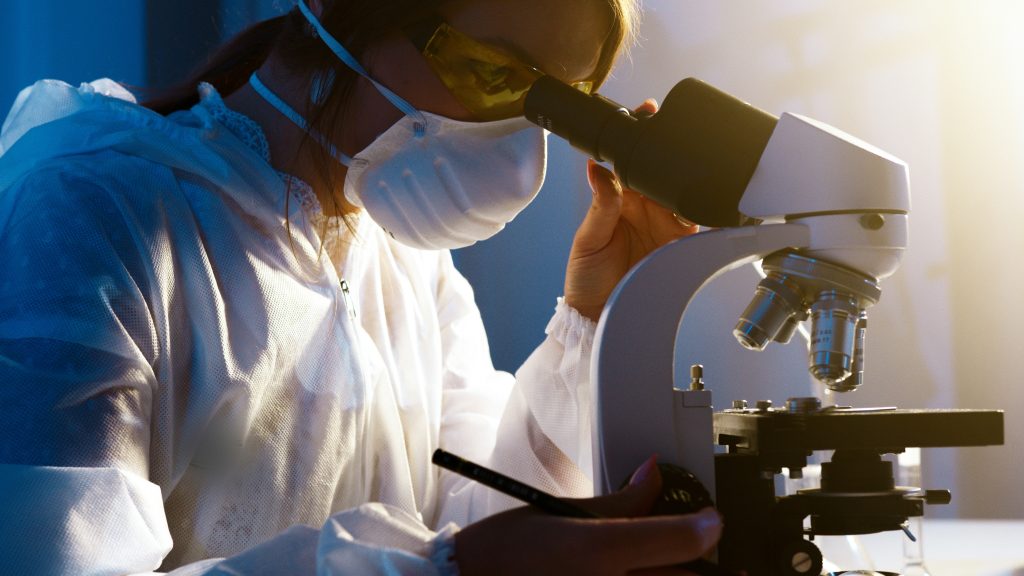
Applications for Microparticles in the Pharmaceutical Industry
Microparticles are generally made up of proteins or synthetic polymeric materials. They can be found in sizes ranging from 1 to 1000 mm, making them ideal for many different applications, including vaccines and other treatments. The following applications describe how they ease patients in need of relief and help the industry:
- When found in small sizes, microparticles are used for inhalation delivery because they are easily dispersed and aerodynamic, allowing them to travel to the deeper regions of the lungs.
- In addition to their role in transferring treatment to deep regions to the body, microparticles play an important role in the treatment and diagnosis of various cancers, including brain cancer, lung cancer, colon cancer, breast cancer, and ovarian cancer.
- Microparticles used in drug delivery have also shown promising results in reducing the treatment time of tuberculosis since they enhance the efficacy of the antibiotics delivered.
Reasons to Use Microparticles in Drug Delivery
Since they were first introduced to the medical field, microparticles have improved the efficiency of different medical treatments. The following advantages describe the benefits of using microparticles in drug delivery:
- Protective coating – Using microparticles supplies bioactive drugs, proteins, and small molecules with protection from degradation. This allows the microparticles to travel freely to their intended destination.
- Controlled release – Microparticles have the ability to effectively achieve a controlled release rate of encapsulated drugs, whether over a period of hours, weeks, or months. This can help in treating patients who forget to take their medication or those who do not want to attend as many appointments.
- Effective for various applications – Microparticles are effective because they can be used for a variety of drugs and can therefore be used in a variety of treatments. For example, they help cancer patients by reducing the number of chemotherapeutic drugs used in patients, reducing the side effects that the patient would otherwise experience.
How Oakwood Labs Can Help in Developing Effective Delivery of Microparticles
At Oakwood Labs, we specialize in formulating microparticles for pharmaceuticals. From the duration of release to the needle size, we work to determine the optimal product characteristics for your project. Other factors that we consider for your project include the following:
- Active pharmaceutical ingredient (API)
- Particle size
- Vial size
- Appropriate solvent system
- Selection of polymer
- Stable state levels
- Method of administration
- Drug load
Our Process for Incorporating Microparticles in Drug Delivery
After we determine the proper characteristics for your microparticle drug delivery, we begin the process of a feasibility study which will determine if the target profile is attainable with our technology. This process includes the following:
- Pre-formulation activities – Pre-formulation activities are used to develop the best approach for the production of microparticles.
- Completing feasibility formulations – The next step is to complete feasibility batches on a small scale. This data is later used to determine the microparticle weight, size, flow rate, and other factors.
- Finalizing reports and choosing formulations for testing – Our team will compile all of the appropriate data and results to form a summary of the microparticle After this, we will provide recommendations for candidate formulations that will be tested on animals. For the use of microparticles in pharmaceuticals and beyond, animal testing is outsourced.
- Further modification and scaling up – After animal testing, we determine the capability of the in vitro release test and use this in situations where further modification is necessary. At this point, the microparticle drug delivery system is ready to begin the process of scaling up.
Start the Process of Using Microparticles in Drug Delivery Today
When you are ready to include microparticles in your pharmaceuticals, be sure to work with a team that carries over 20 years of experience working in an aseptic, FDA-approved manufacturing facility.
Contact us today to learn more.


